
By Stu Mackenzie, Director of Strategic Assets
It takes a community, both nationally and internationally, to achieve conservation success. Our international efforts such the Motus Wildlife Tracking System and bird observatory programs and partnerships are rapidly growing communities of people connected across hemispheres through their passion for conservation, the need to better understand how animals use our shared space, and to conserve migratory animals.
We had the honour of sharing the impacts of these programs at the 4th International Bird Observatory Conference (IBOC) in Veracruz, Mexico. IBOC is an inspiring and rejuvenating experience, bringing together 150 participants representing 70 observatories and organizations from 18 countries. This region is a vital corridor for migratory birds, with 25 species of nearly 5 million raptors making their annual journey from across North America, along with millions of other landbirds and waterbirds.
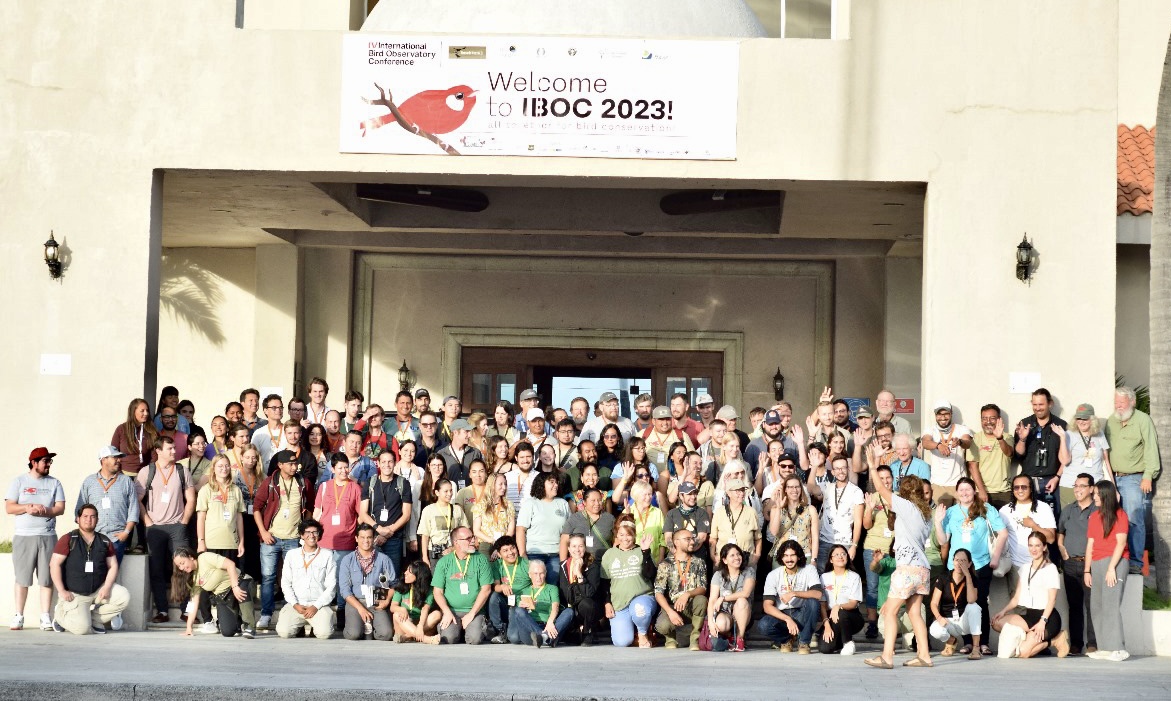
International Bird Observatory Conference (IBOC), Veracruz, Mexico, 2023 group photo.
This gathering of bird enthusiasts and scientists celebrated the incredible work done by bird observatories worldwide. Bird observatories, such as our Long Point Bird Observatory (LPBO), are hubs for the study of bird migration and their populations as well as valuable outreach, education and training centres. Bird observatories play a crucial role in advancing the science, conservation, and global change needed to protect birds and their habitats. The IBOC serves as a valuable platform for these observatories to connect, collaborate, and showcase their groundbreaking work.
We were especially proud to see three previous graduates of LPBO’s Latin American Training program – Manuel Grosselet, Edgar Del Valle, and Alan Monroy Ojeda – showcase their own projects and observatories in Mexico. All three have gone onto be leaders in their field conducting influential work in the region and are certified trainers by the North American Banding Council, spreading invaluable knowledge and skills to their peers and trainees.
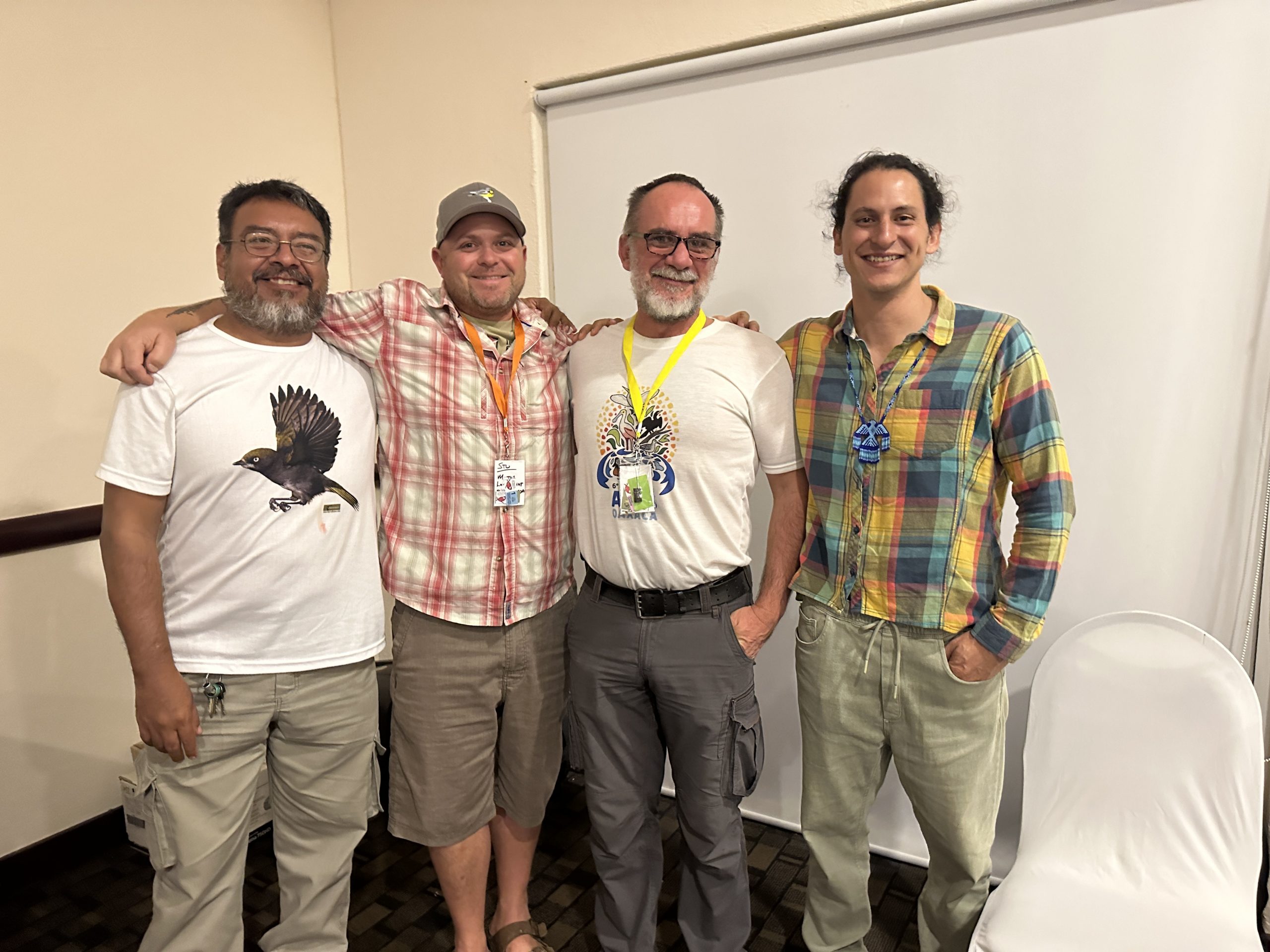
Left to right: Edgar Del Valle, Stu Mackenzie, Manuel Grosselet, and Alan Monroy Ojeda. Photo: Stu Mackenzie
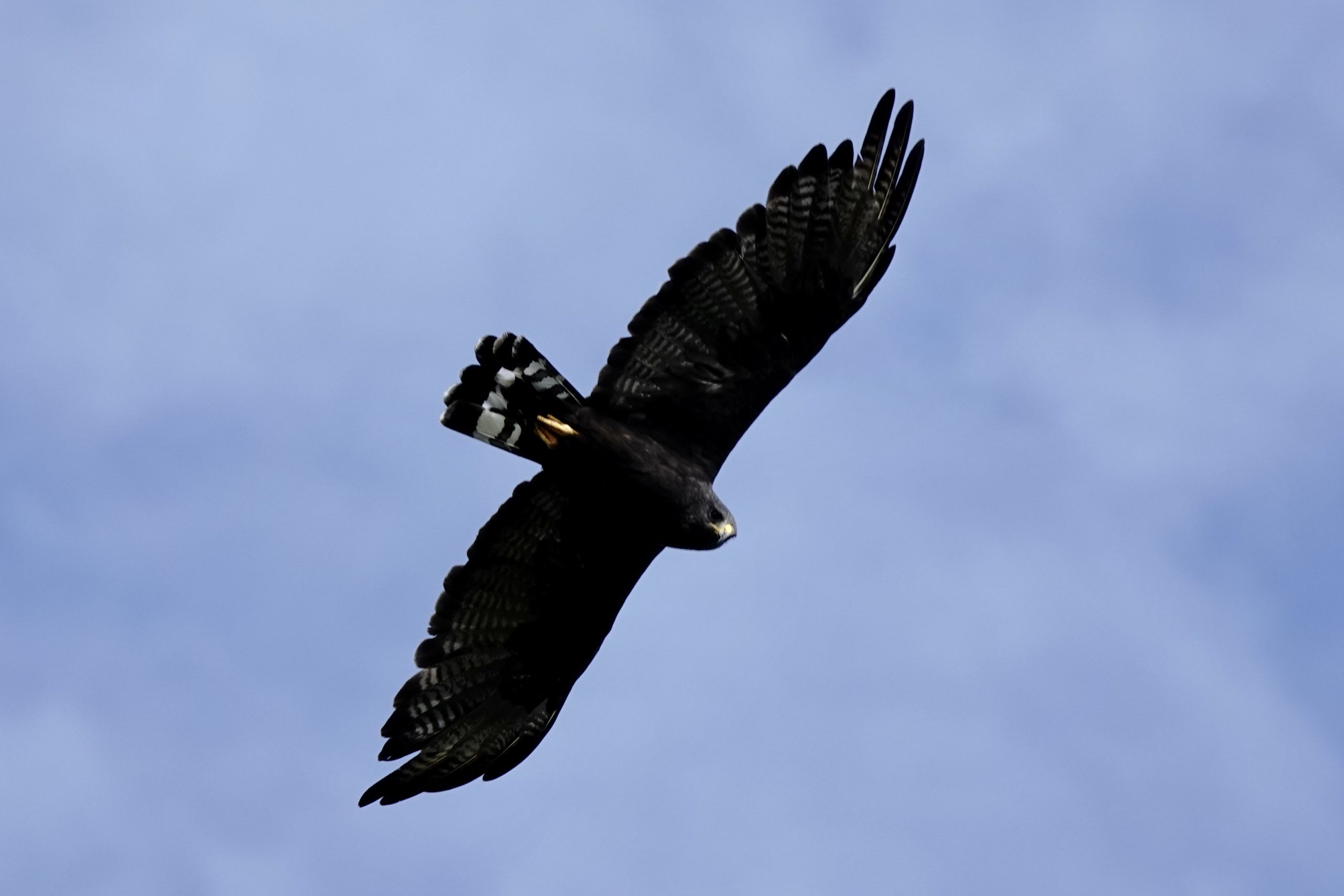
Zone-tailed Hawk Photo: Stu Mackenzie
Video of the Chichicaxtle Observation deck. Video: Stu Mackenzie
Our partners from the Pronatura family of organizations also led a Motus workshop at IBOC, building knowledge and capacity to implement Motus research and conservation projects in Mexico and across Latin America. Motus supports the expansion of infrastructure and more regional coordination hubs that cater to local and regional priorities.
This is why we worked with our Pronatura partners to strategically establish Motus stations at two nearby migration counting sites: Cardel and Chichicaxtle. These stations have been instrumental in providing valuable and new information on the movements of migratory birds through Mexico, including species of concern like the American Kestrel, Black Tern, and Eastern Whip-poor-wills. Ten Whip-poor-wills were detected with Motus tags just before the IBOC began! Two additional birds arrived during the conference, having been tagged as part of a Birds Canada project in southern Ontario earlier this year.
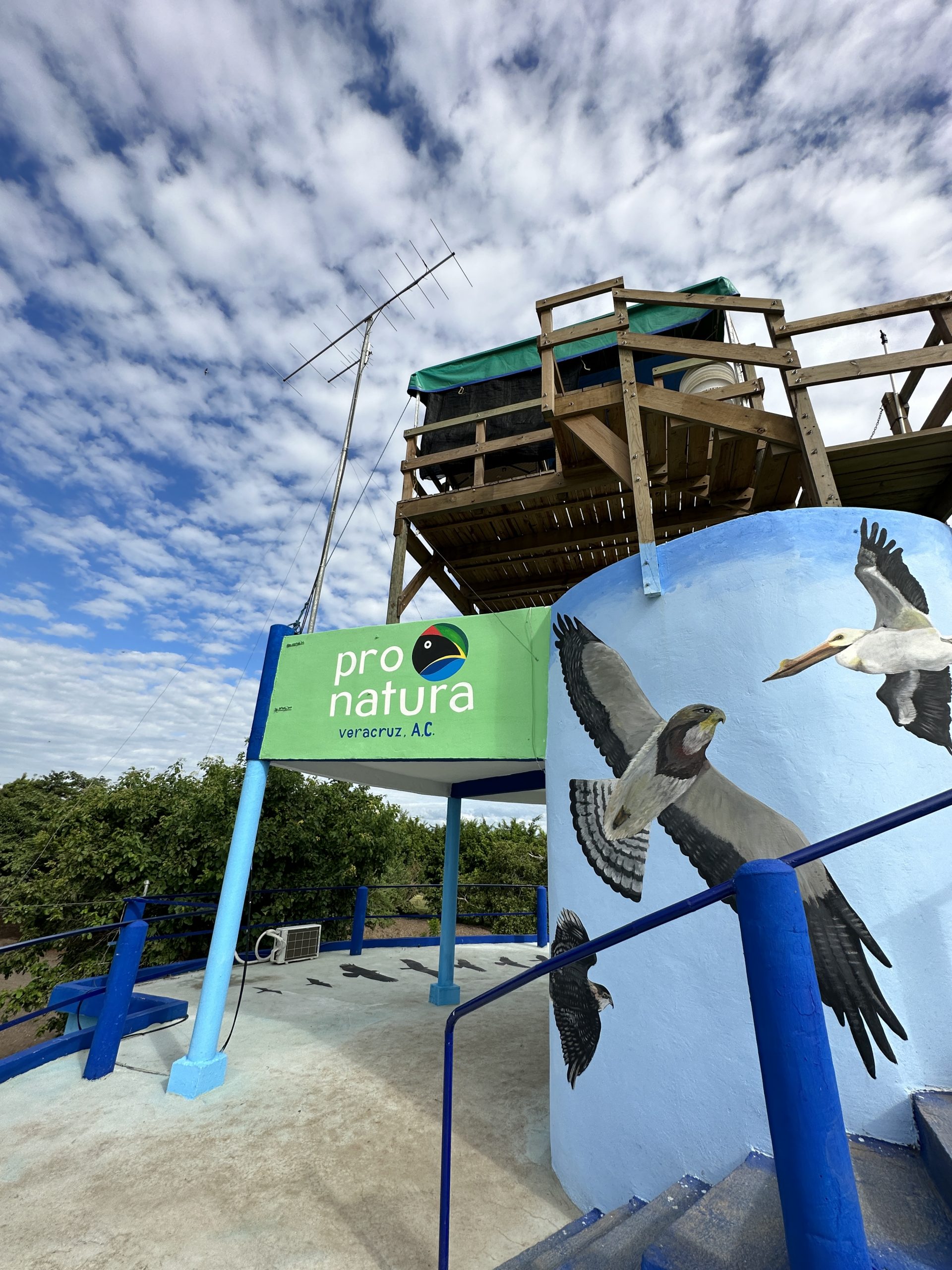
Motus tower at Chichicaxtle Observation Station. Photo: Stu Mackenzie
Whip-poor-wills are an Aerial Insectivore, a group of species showing the steepest declines throughout North America. Birds Canada has been monitoring and conducting research on Whip-poor-wills to determine the cause of these declines and implement measures to halt and reverse habitat and population loss. Our new project on Whip-poor-wills in southern Ontario aims to shed light on nest-site selection, breeding home range characteristics, prey abundance in restored areas, and movement patterns throughout the annual life cycle. The data collected through this project by Motus on the migratory paths of Whip-poor-wills is the first of its kind, allowing us to better inform conservation initiatives throughout their life cycle and across the continent.
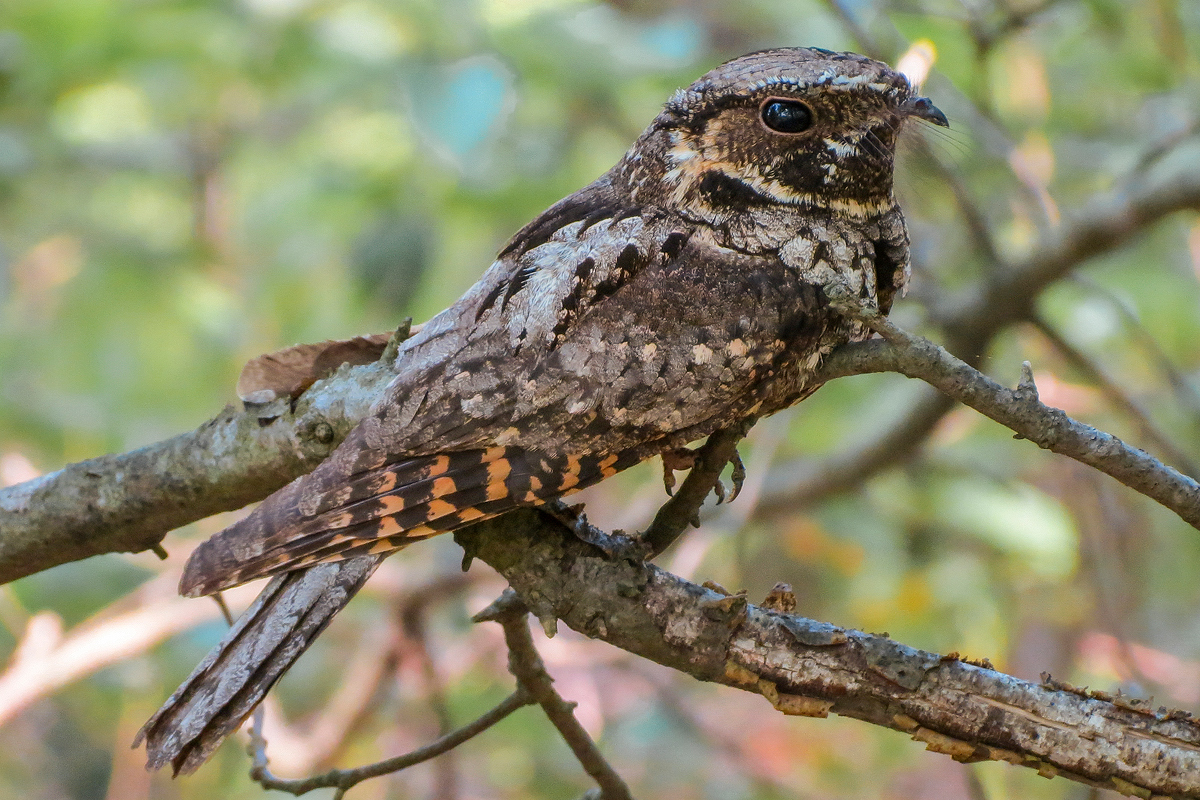
Eastern Whip-poor-will Photo: Ron Ridout
All migratory birds in Canada rely on healthy habitats in jurisdictions farther south and safe passage between locations. The only way to conserve migratory animals is to have a great understanding of their needs throughout their annual cycle and ability to collaborate with those working on the ground across their range. Birds Canada projects like Motus and our bird observatories are some of our most powerful tools to bring people, skills, technology, and information together to drive collaboration and action for migratory birds.
Birds Canada was honored to participate in this event, promoting the efforts of Long Point and Thunder Cape bird observatories, along with our partners across the Canadian Migration Monitoring Network. Representatives from Rocky Point and Vaseaux Lake Bird Observatory also attended, showcasing the collaborative spirit of bird conservation.
A heartfelt thanks go out to the IBOC hosts, Tierra de Aves, and ProNatura Veracruz for their pivotal roles in making the conference a success. As the 4th IBOC came to a close, the attendees eagerly anticipate IBOC V and continued collaboration for birds across the globe.
